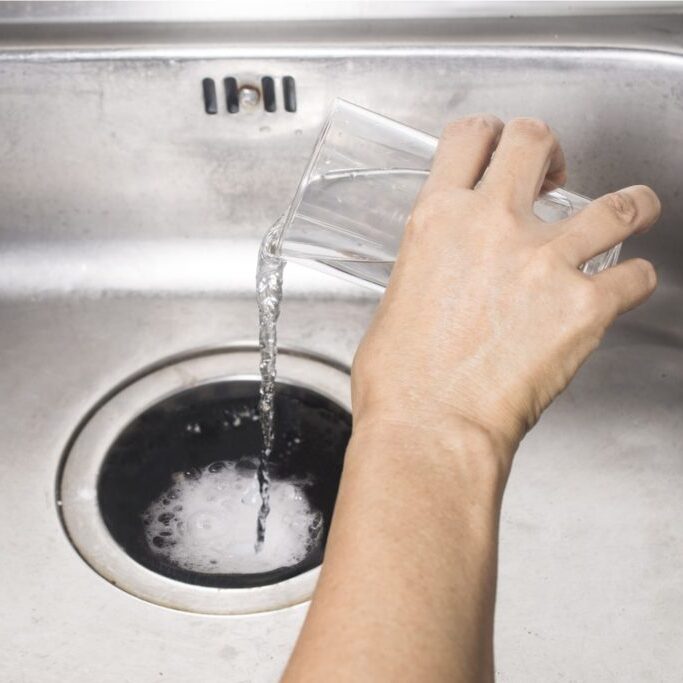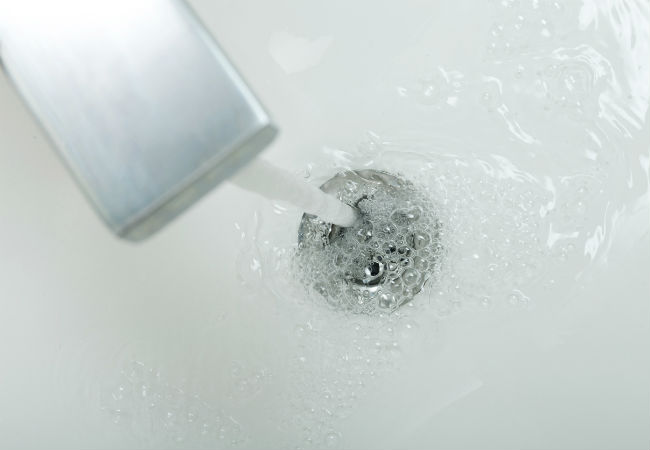Crucial Advice On How To Repair A Slow-Draining Sink
Crucial Advice On How To Repair A Slow-Draining Sink
Blog Article
The author is making a number of good observations relating to 7 Ways To Fix A Slow-Draining Sink Before You Call A Plumber in general in the content following next.

Introduction
We have actually all existed: You're brushing your teeth or washing your hands, and you observe the water pooling in the sink. Rather than swiftly swirling down the tubes, it remains, turning your once-refreshing morning regimen into a small overload scene. A slow-draining sink isn't just aggravating; it's frequently an indication of bigger pipes concerns prowling under the surface. The good news is that a lot of slow-draining sinks can be fixed with a little expertise, a few standard tools, and some patience. Ready to tackle this job head-on? Let's roll up our sleeves and dive right in.
Understanding the Reasons For a Slow-Draining Sink
Before you begin poking around in your pipelines, it helps to know what might be causing the slowdown. Understanding the source makes it much easier to choose the ideal fix.
Devices and Materials You'll Need
The right devices make all the difference. The good news is, you won't need a totally equipped plumbing's van to finish the job.
Step-by-Step Guide to Dealing With a Slow-Draining Sink
Now, let's enter into the nitty-gritty. This step-by-step process will assist you with basic strategies to restore your sink's drain.
Action 1: Get Rid Of and Clean the Stopper
Typically, the stopper (that small plug you lower to block water) is the very first culprit. Remove it thoroughly and wipe any hair or crud trapped around its base. Rinse it completely before placing it back in place.
Action 2: Make Use Of a Bettor to Displace Debris
Got that plunger all set? Position it over the drain and give it a few firm pumps. The concept is to develop suction that can loosen any blockage. If you see littles debris drifting up, you're on the right track.
Step 3: Try a Drainpipe Serpent or Wire Wall Mount
If the plunger does not do the trick, it's time to highlight the drainpipe serpent. Carefully feed it into the drainpipe and twist as you go. You might really feel some resistance-- that's likely the blockage. Maintain turning and drawing until you eliminate the obstruction. If you don't have a drainpipe serpent, a straightened cable wall mount can operate in a pinch.
Tip 4: Apply a Do It Yourself Drainpipe Cleanser
An all-natural cleaner made from baking soda and vinegar can break down recurring crud. Put half a cup of baking soft drink right into the drainpipe, followed by half a mug of vinegar. Allow it fizz for around 15 mins, then flush with hot water. This chemical reaction commonly does wonders for minor clogs.
Step 5: Rebuild and Examine the Sink
Placed everything back with each other and run the tap. Does the water currently swirl away at a decent speed? If yes, provide on your own a pat on the back. Otherwise, don't anguish-- there are still a few more tricks up your sleeve.
Vital Tools for Do It Yourself Repair Works
A plunger is your best starting factor. A little, sink-sized plunger produces suction that can dislodge minor obstructions. For even more relentless blockages, a drainpipe snake (sometimes called a plumber's auger) functions wonders. A set of handwear covers, a flashlight, and perhaps a pair of protective safety glasses are likewise useful.
Advised Cleansing Solutions
Moderate meal soap and hot water can help break down oily accumulation. A mix of baking soda and vinegar is a time-tested natural home remedy, and chemical cleansers supply a more green technique. Maintain chemical drainpipe cleaners as a last option, as they can be rough on your pipelines.
Typical Offenders Behind Slow Drainage
So, what's obstructing points up? Usually, it's a mix of daily debris-- assume hair, soap residue, toothpaste residue, and remaining food bits. With time, these tiny bits collect and cling to the pipe walls, gradually tightening the flow and making it harder for water to travel through. In many cases, natural resource from tough water can additionally include in the substance, developing the ideal tornado for stubborn blockages.
When is it Time to Do Something About It?
If you discover the water draining pipes slower than normal, it's a good concept to intervene faster as opposed to later on. Waiting as well long might bring about finish obstructions, undesirable odors, or perhaps pipeline damages. If the water takes more than a few secs to clean out after shutting off the tap, consider it a red flag and get ready to place on your do it yourself hat.
Safety First: Precautions and Prep work
Prior to you launch into unclogging mode, think about safety. You're taking care of possibly dirty water and particles, so slip on a pair of handwear covers. If you're using chemical cleaners, guarantee the area is well-ventilated and follow the guidelines on the label.
Safety Gear and Office Arrangement
Put down some old towels or rags around the sink location to catch splashes. Eliminate any kind of products that might enter your means, like soap dispensers or toothbrush owners. Make sure you have excellent lights-- grab a flashlight if needed.
Alternate Techniques for Stubborn Clogs
Not all clogs are produced equivalent. If your sink still refuses to work together, think about these alternative solutions.
Sodium Bicarbonate and Vinegar Method
We currently discussed this, however it's worth noting again. This gentle, green approach is much safer than chemical cleaners and commonly quite efficient.
Chemical Drainpipe Cleaners
Enzyme-based cleansers use natural microorganisms to absorb raw material. They're an outstanding choice if you're wanting to prevent rough chemicals. Just bear in mind, they might take a bit longer to work their magic.
Chemical Drain Cleansers: Pros and Cons
Chemical cleansers can blast through hard blockages quick, however they're not without downsides. They can produce heat and fumes, damages pipelines if made use of exceedingly, and position environmental dangers. Utilize them sparingly, and constantly adhere to the directions meticulously.
Safety Nets to Keep Your Sink Flowing
Avoidance is the most effective cure. By taking on a couple of straightforward habits, you can maintain your sink from decreasing in the first place.
Routine Cleaning Up Behaviors
Clean down the sink basin and fixture area regularly. Remove hair or food fragments prior to they have a possibility to wash down the drain.
Preventing Unsafe Materials Down the Drain
Think twice before disposing coffee grounds, oil, or fibrous vegetable scraps down the sink. These wrongdoers cling to pipeline wall surfaces, developing clogs gradually.
Regular Maintenance Checks
Arrange a quick month-to-month examination. Run hot water through the sink for a couple of minutes, paying attention to the flow. If it appears slow-moving, act quickly prior to it ends up being a full-on clog.
When to Call a Specialist Plumber
Sometimes, no matter how hard you try, that block just won't move. That's when it's time to generate the pros.
Signs That Indicate a More Severe Problem
If your sink drains gradually in spite of multiple efforts, or if you observe water backing up in other fixtures (like your shower or toilet), you may have an extra significant plumbing problem hiding much deeper in the system.
Stabilizing Do It Yourself Initiatives with Professional Help
While DIY can save you money and supply a feeling of success, there's no pity in calling a specialist. A specialist plumbing can assess your entire plumbing setup, guaranteeing there's no underlying damages or long-lasting issue that could cost you extra in the future.
Contrasting Prices and Long-Term Solutions
Before making a decision, take into consideration the big picture. An inexpensive, quick fix may fix the problem temporarily, however investing in an extra long-term service might conserve you money and stress in the long run.
Weighing the Costs of Do It Yourself vs. Specialist Solutions
Do it yourself solutions commonly cost little bit more than the rate of a bettor or a bottle of baking soda. Specialist solutions, on the other hand, included a price tag yet might prevent repetitive issues and expensive repair work later.
Investing in Top Quality Fixtures and Upgrades
If your sink's design adds to frequent blockages, it may be worth upgrading to higher-quality fixtures or changing the plumbing layout. Consider this an investment in your home's capability and comfort.
Conclusion
A slow-draining sink can seem like a minor irritation, yet it's often an indicator that your pipes requires a little TLC. By recognizing the origin, employing the right devices and methods, and dedicating to simple preventive measures, you can keep your sink streaming openly. And when all else falls short, never wait to hire a professional-- your home's pipes is worth the investment in treatment and upkeep.
Three Common Ways to Fix a Slow Drain
Baking Soda Method
Boil a full pot of water. Measure out cup of baking soda and pour it down the drain. Then take cup of the magical cleansing substance known as white vinegar and drop that down there too. Allow the mixture to fizz in the drain for five minutes as the vinegar and baking soda combine. Now dump in that whole pot of boiling water. This combination of cleaning substances should clear out anything that is causing your sink to drain slowly. If it doesn t...
Zip-It
If the baking soda method doesn t clear out your drain, it may be because a significant amount of hair and/or other debris has collected there and you need to remove it. Purchase a Zip-It tool at any home improvement or hardware store and insert it into your drain. It will catch any collected hair or debris that s blocking the flow of water. Pull it out. If it s got a big clump of hair, etc. on the end, you ve probably got your culprit.
Drain Cleaner
If these methods don t work, there is the standard drain cleaner that you can also buy in a hardware store or even your local grocery store. It s better if you can use a household solution, but these drain cleaners often work in a pinch. They re very simple to use. You generally just dump them in your drain and wait. If even this method is not effective, it may be time to call the plumber.
https://www.mrrooter.com/oneida/about-us/blog/2017/july/three-common-ways-to-fix-a-slow-drain/

Hopefully you enjoyed our excerpt about Solved! How to Fix a Slow Sink Drain. Thanks a ton for spending some time to browse our piece. So long as you enjoyed our blog posting if you please do not forget to pass it around. We treasure your readership.
Get Offer Report this page